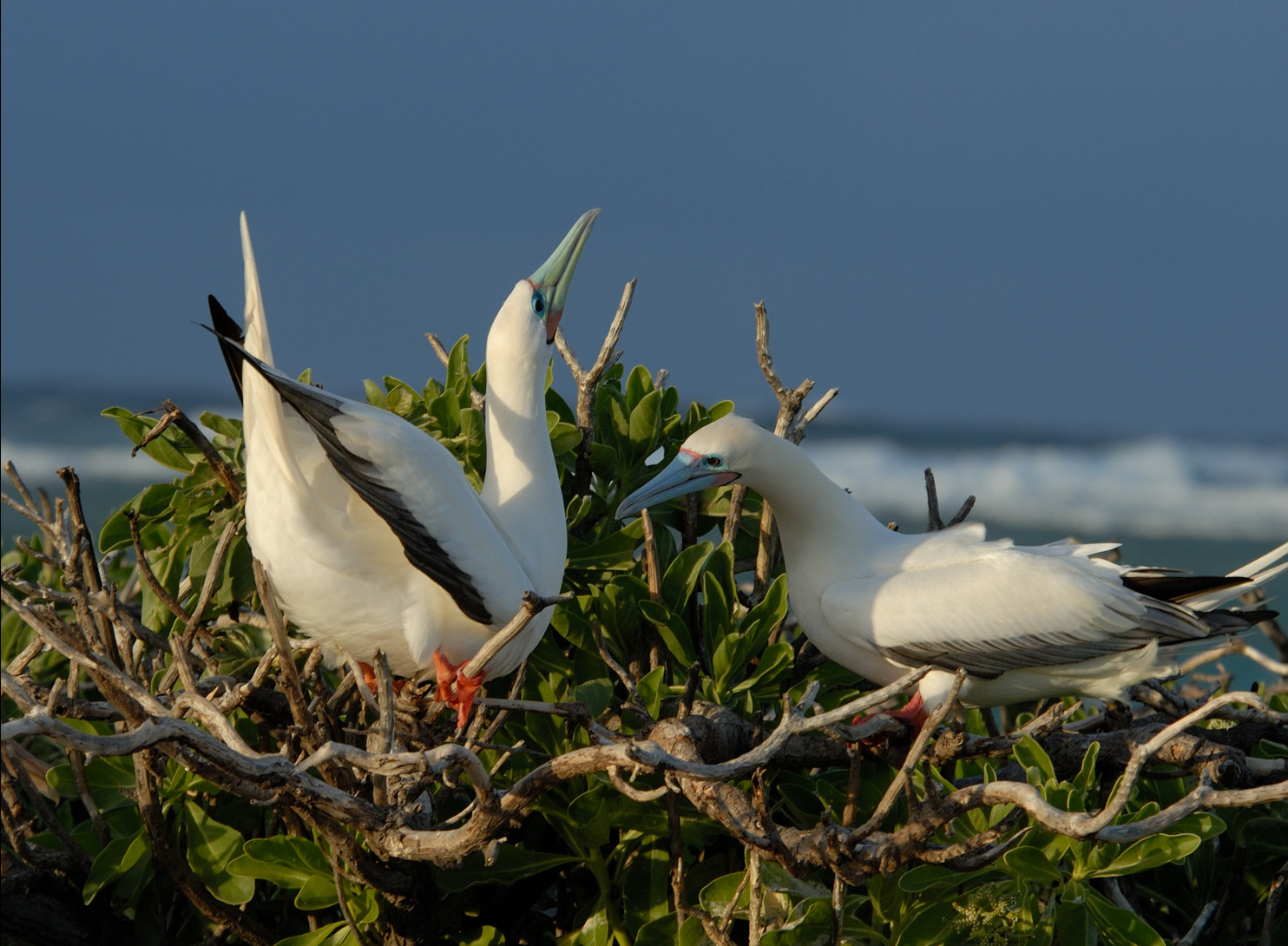Studying links between foraging seabirds, tuna, sharks, dolphins

Red-footed boobies, such as these in the Central Tropical Pacific, will be part of the study undertaken by IAB researcher Greg Breed and his team.
Oct. 28, 2021
Researchers at UAF’s Institute of Arctic Biology have been awarded $440,000 by the National Science Foundation to understand how sharks and dolphins help seabirds forage in the open ocean.
The project, led by Associate Professor Greg Breed, will work to understand how sharks, tuna, and dolphins drive aggregations of fish to the surface of the ocean, where seabirds can then access them. These interactions are poorly understood but believed to be critical to the survival of many seabird populations and may be threatened by overfishing, especially of tuna.
The project will start later this year with the first field trips beginning in May 2022. Breed will work with collaborators at the University of Washington (Sara Maxwell), the University of the California Santa Barbara (Hillary Young) and Cal State San Jose (Scott Shaffer).
To perform the research, the team is working closely with The Nature Conservancy, and will deploy tiny cameras along with GPS tracking tags and other biologging devices that measure feeding and heart rate on free-living sea birds nesting at the Palmyra Atoll in the Central Pacific.
For more information, email Greg Breed atgabreed@alaska.edu.


